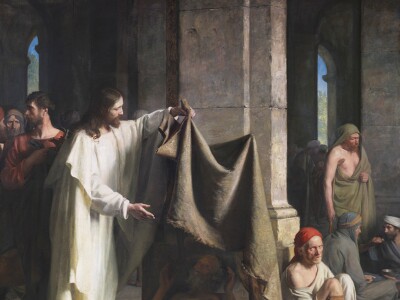
Guest Post by Megan Mayfield, MOA Marketing Intern
The Roman civilization spanned almost 1,000 years and was a very productive time for art. Because of the widespread nature of the Roman Empire, Roman art took on attributes from Greece, Egypt, and the Etruscans. The influence of Greek art, however, is the most noticeable in the Roman style. According to myth, the Roman civilization was founded by Romulus and Remus, who had Greek heritage. A good portion of the Roman culture comes from Greece, including theology and artistic conventions. Many surviving “Greek” marble statues are actually marble copies done by Roman artists. Greek artists often cast their sculptures in bronze instead of carving them from marble. Very few of the bronze originals remain due to many of these sculptures getting repurposed into cannons and ammunition. Roman artists studied extensively to learn how to redo the Greek style and that bled into the formation of Roman art, namely the use of naturalism and proportions. However, with a slight difference of government, the subject of art took a different route from traditional Greek art. Artists, employed by the Roman Republic were commissioned to do portraits of leaders. Many of these individuals were made to look older in their portraits to convey a sense of wisdom and strength that was only attainable to the older populations.
Instead of striving for a youthful idealization, as the Greeks did, Roman artists strove to illustrate every flaw and wrinkle that made their subject look as if they had devoted their entire lives to the wellbeing of the Republic. The Imperial age of the Roman civilization began a trend of looking back to the classical Greek period with idealized figures and endless youth. Leaders chose to be shown as younger and stronger, rather than old and wise. However, this rich classicalism didn’t last forever. By the end of the Imperial period, the art shifted once more toward a more Egyptian or Near Eastern influence. The individuals were less naturalistic and idealized. Figures were more frontal and deeply carved. There was a lapse in extensive detail, flowing lines, and strict proportion as with the early Roman and Classical Greek eras. There is also clear evidence of hierarchal scale, where the most important figure in a mosaic or frieze is the largest and most prominent individual. Roman art, like Greek art, is one of the formative influences of the Renaissance and later artistic movements. The Roman tradition of copying classical Greek sculptures helped preserve an important artistic movement that ended up shaping the rest of the art world. But, even though the Romans were fond of their Greek counterparts, they also had their own unique style that tells of Rome’s rich history of politics, war, and culture.


